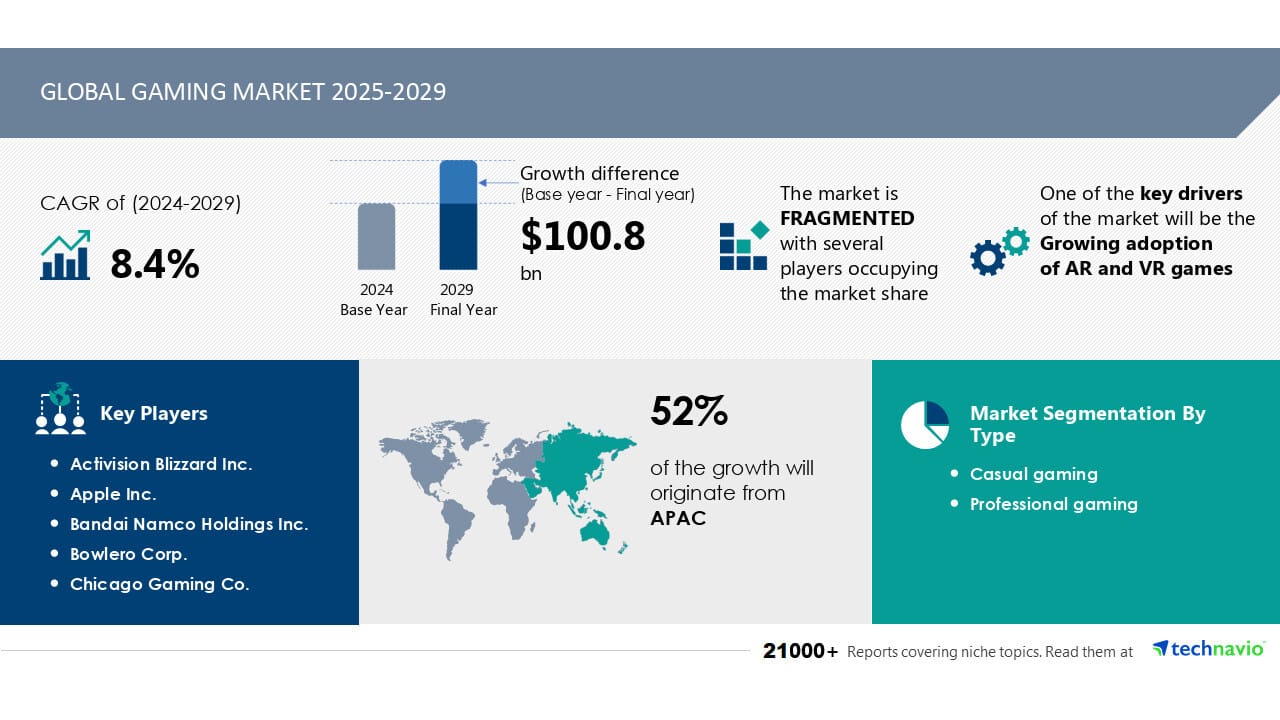The video game sector is experiencing an unprecedented transformation. According to a Technavio report, the global video game market is expected to grow by $100.8 billion between 2025 and 2029, with a compound annual growth rate (CAGR) of 8.4%. This boom is largely attributed to the adoption of technologies such as augmented reality (AR), virtual reality (VR), and artificial intelligence (AI), which are redefining the gaming experience and expanding market opportunities.
Growth Drivers: AI, AR, and VR
The integration of artificial intelligence is revolutionizing the industry by offering more personalized and immersive gaming experiences. Developers are using AI to design gaming environments that adapt to users’ preferences and skills, generating ultra-realistic graphics and creating missions with greater tactical complexity. At the same time, AR and VR technologies are enabling more interactive and engaging experiences, making them a key attraction for gamers worldwide.
Additionally, advancements in connectivity, such as the rollout of 5G, are boosting the growth of cloud gaming, which eliminates the need for expensive hardware and allows users to access high-quality titles from connected devices, such as smartphones and tablets.
Regional Growth Led by Asia-Pacific
Asia-Pacific continues to be the undisputed leader in the global market, accounting for 52% of the projected growth between 2025 and 2029. Countries like China, Japan, and South Korea have solidified their position thanks to a massive base of mobile gaming users and access to the latest technological innovations. North America and Europe also stand out as key regions, while Latin America and Africa present expansion potential in emerging segments.
The Cloud Gaming Revolution
Cloud gaming is changing the game. This technology allows video games to run on remote servers and be streamed to users’ devices via internet connection, eliminating the need for specialized hardware. This democratizes access to advanced video games and attracts a broader audience, especially among casual users and families seeking accessible entertainment.
Regulatory Challenges: The Case of Loot Boxes
Despite its growth, the sector faces significant challenges, one of the most prominent being the regulation of loot boxes. These random rewards, which can be purchased with real money, have generated controversy due to their similarity to gambling practices, particularly among vulnerable users such as minors. Countries like Belgium and Australia have begun to implement restrictions, which could impact developers’ business models.
The Role of Market Leaders
Companies like Sony, Microsoft, Nintendo, Epic Games, and Activision Blizzard are leading innovation in the sector. These companies have invested in integrating advanced technologies such as virtual reality and artificial intelligence into their products while exploring new monetization strategies and global expansion.
The Future of Video Games: Opportunities and Challenges
The global video game market is not only expanding but also redefining digital entertainment. The rise of mobile devices and access to cloud gaming platforms are facilitating the entry of new users, while advanced technologies like AI and 5G are creating more engaging and dynamic experiences.
However, the sector must address ethical challenges such as gaming addiction and the regulation of certain business models. The balance between innovation and responsibility will be key to ensuring sustainable growth.
The Technavio report makes it clear that video games will continue to be one of the most influential industries in the realm of global entertainment. With an ever-expanding user base and technological advancements redefining the sector’s possibilities, the future of video games promises to be as exciting as the worlds they invite us to explore.

